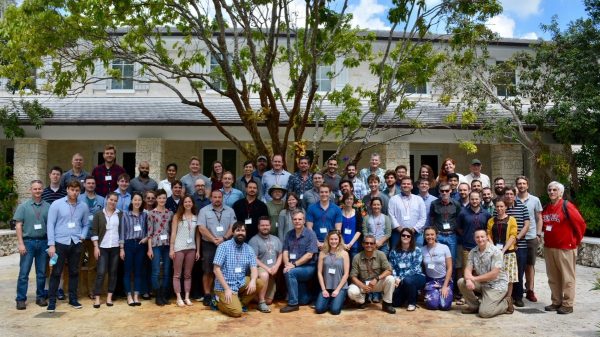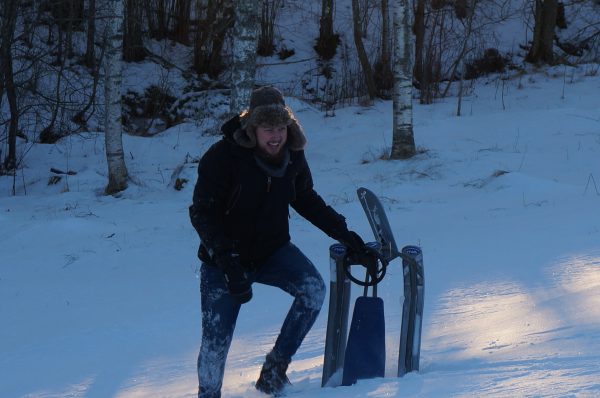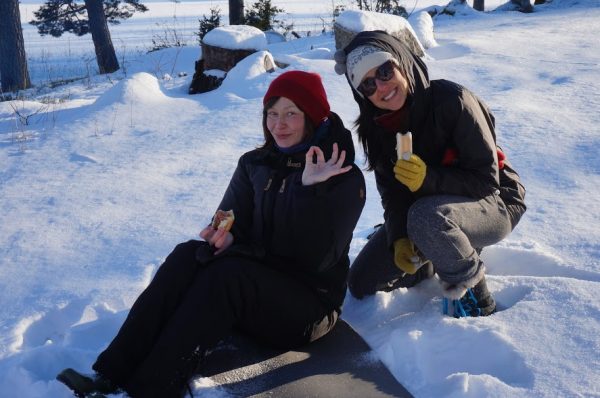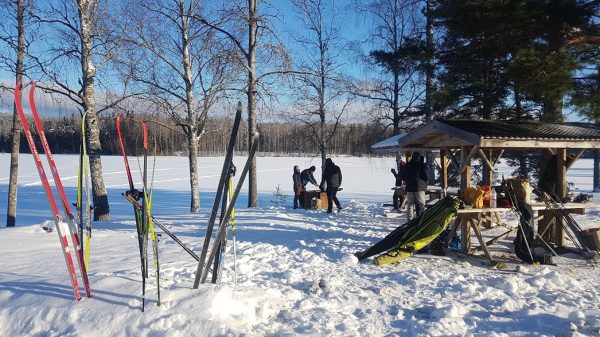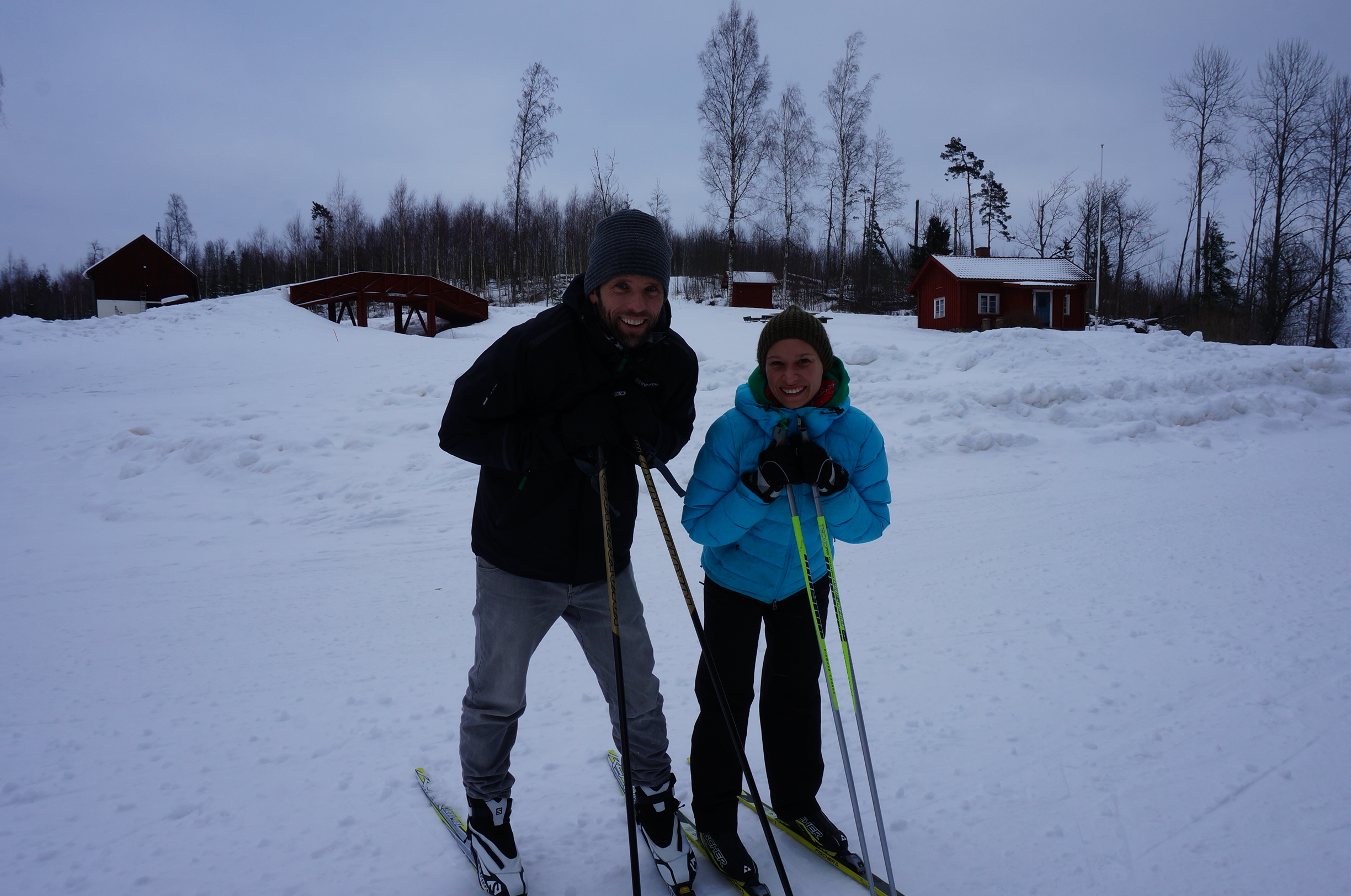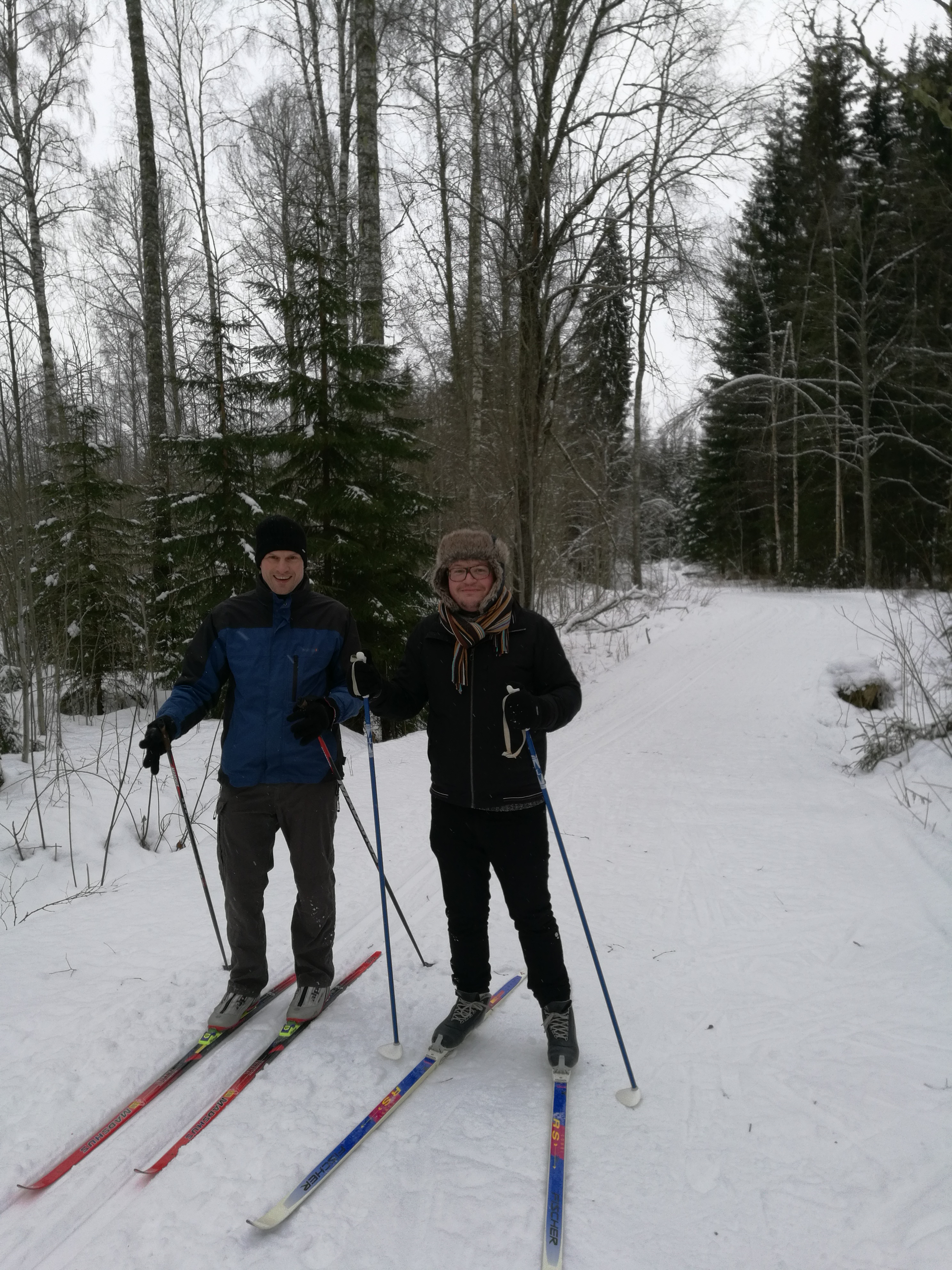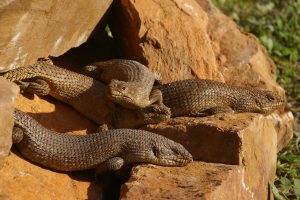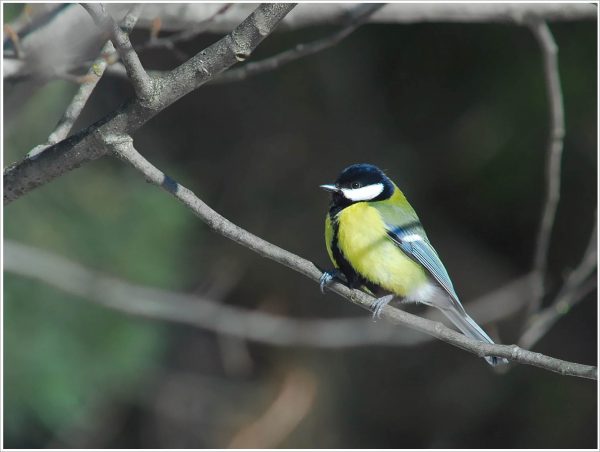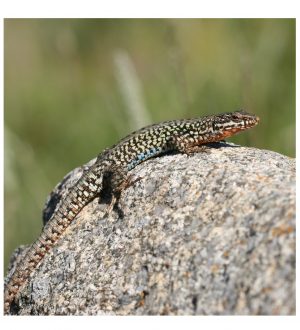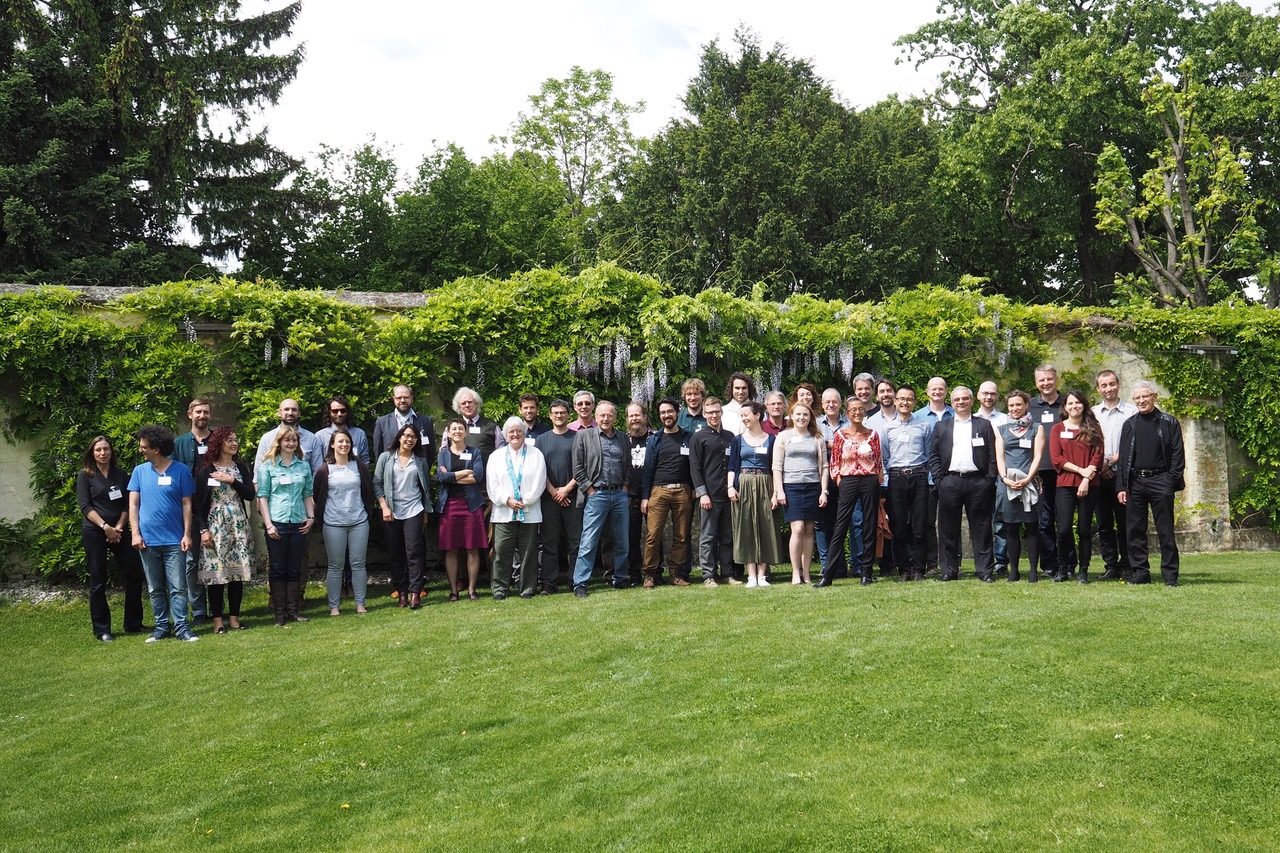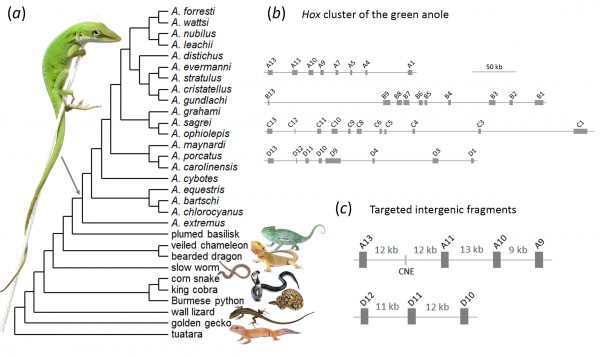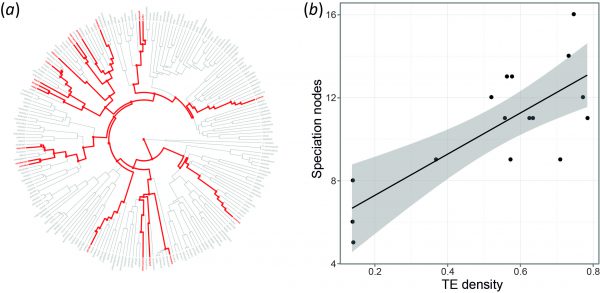Anolis symposium in Miami
The organizers had chosen an appropriate setting for the 2018 Anolis symposium – sunny Miami, Florida, at the Fairchild Botanical Garden that ‘hosts’ six Anolis species. Since Nathalie was working at the museum collection of the University of Florida, she took the opportunity to join for two days of Anolis fun.
The meeting was the fifth of its kind, with the first taking place already in 1972. That is an average of one meeting every 9th year! Not very frequent, but it means the symposium already is a classic event. The program was full, but the organizers had scheduled long coffee and lunch breaks to make sure there was enough time to explore the Botanical Garden, in particular to meet our scaly friends, of course.
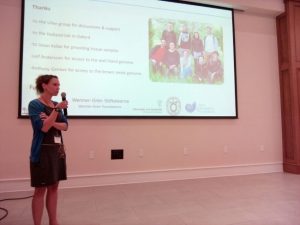 There were 31 talks. These covered pretty much every question that can be asked about Anolis lizards: behaviour, ecology, population biology, developmental biology, genome biology and evolution. Several talks were on urban ecology since many Anolis species have developed a taste for busy metropolitan environments, something that is easily observed in Miami. Most speakers presented ongoing work which generated a lot of fruitful discussions. Nathalie presented her work on the relationship between transposable elements (TE) and diversification rates in Anolis, and how transposable elements may be responsible for some pretty cool changes in Hox gene expression. TEs were new to many in the audience, but Nathalie managed to get the ecologists excited about genome biology.
There were 31 talks. These covered pretty much every question that can be asked about Anolis lizards: behaviour, ecology, population biology, developmental biology, genome biology and evolution. Several talks were on urban ecology since many Anolis species have developed a taste for busy metropolitan environments, something that is easily observed in Miami. Most speakers presented ongoing work which generated a lot of fruitful discussions. Nathalie presented her work on the relationship between transposable elements (TE) and diversification rates in Anolis, and how transposable elements may be responsible for some pretty cool changes in Hox gene expression. TEs were new to many in the audience, but Nathalie managed to get the ecologists excited about genome biology.
The talks were great. But the best thing about the symposium was to meet other Anolis enthusiasts and to talk (and see!) ‘Anolis’ for a whole weekend! For Nathalie – the only representative of the old world, as pointed out by Jonathan Losos – it was a fantastic opportunity to exchange ideas with those who shared an interest in evo-devo. There was a lot of successful exchange of ideas – from practical matters like the best way to image embryos, to the conceptual issues surrounding the role of development in evolution.
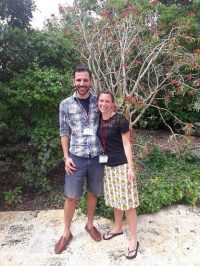
And look who turned up! Sozos Michaelides – who finished his PhD in our group three years ago – has abandoned the wall lizards and is now disentangling the introduction histories of Anolis lizards with Jason Kolbe at Rhode Island.
Thanks to James Stroud, Anthony Geneva and Jonathan Losos for a fantastic job with the organization. James, the local amongst the organizers, made sure that everyone got a taste of the Caribbean – serving Cuban delights during coffee and lunch breaks, and homebrewed beer (‘Lizard lager’ and ‘Anole ale’) in the evening. The next meeting is scheduled for the year 2025 – we look forward to it!
Evolving Evolutionary Biology at the Santa Fe Institute
Researchers from around the world gathered at a snow-covered Santa Fe Institute to discuss the evolutionary implications of extra-genetic inheritance. The workshop – Integrating Development and Inheritance – was organized by Tobias and colleagues as part of the EES research program. For two and a half days the participants – biologists, mathematicians, computer scientists, anthropologists, historians and philosophers of science – presented their work and took part in lively and constructive discussions about the nature of inheritance and why it matters to evolution.
 The workshop kicked off with some historical background to the separation of inheritance and development, and how this shaped the development of research programs within evolutionary biology. The biology talks covered many different mechanisms by which parents influence the development of their offspring – from epigenetic inheritance in plants to whale culture. Attendees further discussed how empirical work and mathematical modelling best can proceed with constructive views of development and inheritance. For the full program, please see here.
The workshop kicked off with some historical background to the separation of inheritance and development, and how this shaped the development of research programs within evolutionary biology. The biology talks covered many different mechanisms by which parents influence the development of their offspring – from epigenetic inheritance in plants to whale culture. Attendees further discussed how empirical work and mathematical modelling best can proceed with constructive views of development and inheritance. For the full program, please see here.
We are very grateful to all the participants for their outstanding presentations and engaging and constructive contribution to the discussions. Nothing beats learning about one’s own field through talking to people with different backgrounds and expertise. Judging from the talks, we have a lot of exciting empirical and theoretical research and philosophy and history of science to look forward to. An extra thanks to Michael Lachmann and the Santa Fe Institute for hosting us. We will be back in November!
Two PhD positions available to study the evolutionary origin of family living
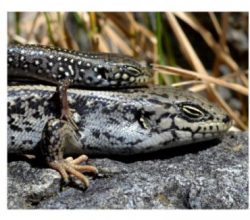 We are looking for two students interested in doing their PhD on the evolutionary origin and diversification of social complexity in lizards. The positions are part of a research project funded by the Australian Research Council and the successful candidates will be based either at the University of Tasmania (primary supervisor Geoff While) or at Macquarie University (primary supervisor Martin Whiting). The Lund collaborators are Tobias and Charlie Cornwallis. For more information on the position, please read here, or contact any one of us directly.
We are looking for two students interested in doing their PhD on the evolutionary origin and diversification of social complexity in lizards. The positions are part of a research project funded by the Australian Research Council and the successful candidates will be based either at the University of Tasmania (primary supervisor Geoff While) or at Macquarie University (primary supervisor Martin Whiting). The Lund collaborators are Tobias and Charlie Cornwallis. For more information on the position, please read here, or contact any one of us directly.
Winter is coming!
 Winter is not really the best time of year in Skåne, unless you really enjoy all those different shades of grey. To get a feeling of a proper Swedish winter, the group packed their warmest clothes (and triple pairs of socks) and headed up to Sunne, where Tobias was born and raised. Winter in Värmland is the real thing – snow-covered forests, ice-covered lakes and the hope of a rare wolf spotting.
Winter is not really the best time of year in Skåne, unless you really enjoy all those different shades of grey. To get a feeling of a proper Swedish winter, the group packed their warmest clothes (and triple pairs of socks) and headed up to Sunne, where Tobias was born and raised. Winter in Värmland is the real thing – snow-covered forests, ice-covered lakes and the hope of a rare wolf spotting.
Tobias’ parents opened up their whole house for us, and his brother served as the cross-country skiing coach and ‘vallachef’. People from eight nationalities put on their skis – some for the very first time – and headed out to the tracks. Everybody had healthy rosy cheeks and slightly frozen toes by the end, and incredibly nobody was injured! In fact, Yang and Mara both proved to be natural talents at skiing, despite the limited snow cover in Chengdu and Murcia. This was extra impressive considering that Yang broke his ‘low Celsius record’ two days in a row and had only once seen this much snow before – an occasion he described as “catastrophic”!
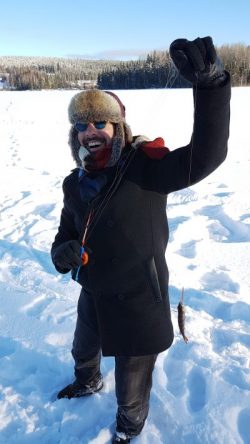 Ice-fishing released a lot of creative forces in the group. Pumping up a groovy atmosphere in the glorious sunshine, Illiam and Alfredo managed to pull up several perch while the others skied across the lake. Back at the house, an old snow racer could of course not be resisted. The greatest daredevil and air-time record-setter was Reinder, perhaps due to limited childhood experience of what happens when you go down hills really fast…
Ice-fishing released a lot of creative forces in the group. Pumping up a groovy atmosphere in the glorious sunshine, Illiam and Alfredo managed to pull up several perch while the others skied across the lake. Back at the house, an old snow racer could of course not be resisted. The greatest daredevil and air-time record-setter was Reinder, perhaps due to limited childhood experience of what happens when you go down hills really fast…
After these lovely but chilly outdoor activities we enjoyed cosy evenings around the fireplace with games and wine. Alex turned out to have the best strategic skills whereas Illiam proved to have the gift of storytelling (a.k.a. lying). Nathalie turned out to be an amazing air pilot, Hanna a master of skull-drumming and Tobias – well, he was still the real Harry even when everyone else had lost track.
Many thanks to the Uller family for an amazing weekend. We’ll see you again next time… ;-)!
Live bearing promotes the evolution of sociality
Some lizards and snakes tend to hang out in family groups, not unlike the more familiar social groups of birds and mammals. Our recent study, headed by Ben Halliwell and Geoff While and published in Nature Communications, show that the evolution of social grouping is much more likely to have happened in lizards and snakes that give birth to live young. There could be a number of reasons that transitions to sociality are more common for live bearing species.
The most obvious one – and the theoretical rationale behind this study – is that giving birth to live young makes interactions between parents and offspring more likely than in species that lay eggs. And interaction among kin, in turn, is what causes natural selection for group living.
Some lizards – in particular the Egernia – in fact have quite complex kin-based social structures. As expected, such groups have almost exclusively evolved in live-bearing lineages. Interestingly, egg guarding does not seem to have the same positive effect on the evolution of sociality. Maybe this is because the ecology needs to be right as well to select for delayed dispersal and parental tolerance of offspring. For the full story, please download the paper here.
Evolutionary adaptation to climate: same same, but different
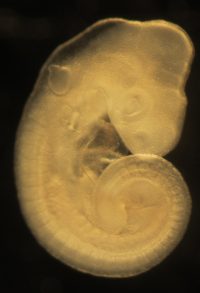
A new study published in Evolution – headed by Nathalie – reveals how embryonic gene expression patterns change as non-native lizards adapt to cool climate.
Populations adapting independently to the same environment provide important insights into the repeatability of evolution. In the 20th century, common wall lizards (Podarcis muralis) from southern and western Europe were introduced to England, north of their native range. We have previously shown that non-native populations of both lineages have adapted to the shorter season and lower egg incubation temperature by increasing the absolute rate of embryonic development.
In this new study, we show that embryos from non-native populations exhibit gene expression profiles consistent with directional selection following introduction. However, different genes are affected in lizards from France and Italy. The biological function of these genes are quite similar, though, and consistent with mechanisms that should speed up development. These results indicate that small populations are able to adapt to new climatic regimes, but the means by which they do so may largely be determined by founder effects and other sources of genetic drift.
Heredity in Evolutionary Theory
It may not have escaped your attention that biologists are taking a more inclusive view on heredity these days, regularly referring to epigenetic or behavioural inheritance, for instance. It is often difficult to understand what this means, however, or why it matters. Tobias and Heikki Helanterä take a closer look at heredity in evolutionary theory in a new book from Oxford University Press – Challenging the Modern Synthesis: Adaptation, Development & Inheritance, edited by philosophers of biology Philippe Huneman and Denis Walsh. A pre-print version of the chapter can be found here.
In evolutionary biology, there are arguably four main ways to think of heredity: as transmission of genes and other ‘particles’, as a phenotypic covariance, as transmission of information, and as the outcome of developmental processes. These are not mutually exclusive, and which one that is adopted or emphasized is partly a pragmatic decision based on the research question at hand (e.g., Tobias regularly makes use of all four), and partly a reflection of one’s conceptual framework (e.g., in some people’s minds heredity can only be genetic and strictly separated from development, and if you think otherwise you are either an idiot or, worse, a Lysenkoist in disguise).
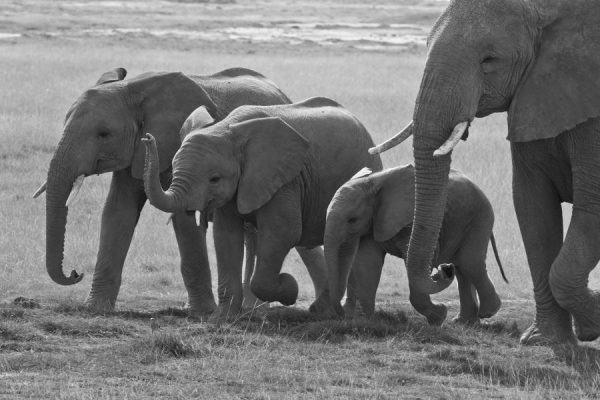
When empirical research reveals new mechanisms by which parents influence their offspring – like the persistence of DNA methylation from mother to offspring or offspring learning how to forage from their father – researchers naturally accommodate these findings according to how they think of heredity. But it also leads the odd biologist (and non-biologists) to question the coherence of her current conceptual framework, which is why ‘extra-genetic inheritance’ can be perceived as a challenge to the traditional view of evolution (i.e., the ‘modern synthesis’ – if you do not like this term, just think of a colleague who thinks that all fundamental problems in phenotypic evolution can/should be answered without referring to development). And, as we know, conceptual change can make some new research questions appear more interesting or relevant than they did before, whereas others may fade into oblivion.
Illiam Jackson joins the group
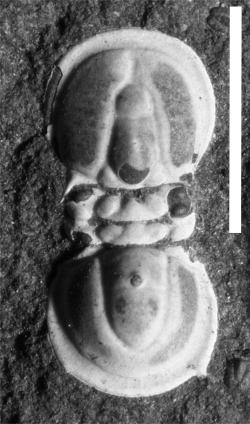
Target of illiams PhD work – Agnostus pisiformis fossil. Scalebar is 2 mm.
It is often pointed out that there is a strange gap between evolutionary biology and palaeontology. Particularly considering that it is hard to find something so obviously relevant to evolution as the fossil record… Anyway, we now hope to reduce this gap thanks to Illiam Jackson. Illiam did his PhD in palaeobiology in Uppsala under the supervision of Graham Budd (although he likes to point out that his first degree was in Biology). He joins us with a passion for morphometrics, and for making development relevant also to the study of fossils. Illiam will continue his work on plasticity and evolution of trilobite-ish arthropods here at Lund, but he will also – together with Nathalie Feiner – explore if developmental plasticity shapes adaptive radiation of lizards. Welcome Illiam!
Highlights from ESEB 2017
This year’s European Society for Evolutionary Biology meeting was held in Groningen. ESEB is always a great opportunity to see old friends, learn new things, and – somewhat jealously! – see the progress on the most famous study systems in evolutionary biology, such as cichlids, Heliconius butterflies, and bird beaks. And progress there was. Among the most memorable were further evidence from the Seehausen group – presented by Joana Meier and others – that hybridization has played a creative role in fish evolution in both African and European lakes, and a tour-de force of Heliconius evolutionary genomics in a plenary by Chris Jiggins (there is a book, not only for butterfly lovers!). Hybridization was hot at the meeting so it was a shame that Yang was unable to join this year. Wallies were represented, however, by a nice talk on the ventral colour polymorphism by Pedro Andrade. Chances are they will make a big splash next year in Montpellier!
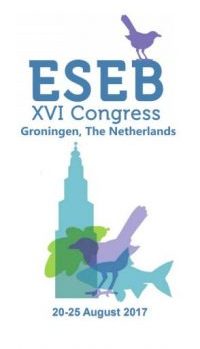
To be fair, ESEB has never been a hotspot for development and this year was no different. Manhattan plots abound, but there was generally little process-oriented research to allow us to connect genotype and phenotype. Exceptions included an excellent plenary by Renee Duckworth, where she demonstrated how to integrate proximate and ultimate causation to understand why organisms change over time or, in this case, why they may not do so. Another exceptional talk was delivered by Alex Badyaev, expanding on his recent papers on the evolution of carotenoid colouration in birds. Describing evolution as transitions between external and internal control in regulatory networks, this work demonstrated the potential for taking a comparative network approach to study innovation and diversification from a developmental perspective.
Other welcome islands in the sea of genomics of adaptation include Andreas Wagner’s plenary on innovation and modularity, or a talk by Christoph Thies from Richard Watson’s group who presented some refreshing ideas on evolutionary transitions in individuality and demonstrated how to capture this process formally. Plasticity and evolution was represented here and there, including an update on the spadefoot toad story by Ivan Gomez-Mestre.
Judging from the ESEB talks, evolutionary biologists are very interested in extra-genetic inheritance. Most talks – including a pretty well-attended symposium keynote by Tobias – revealed this interest to largely be about adaptive function, but with some nice links to life history and ageing (many thanks to Foteini Spagopolou and the other organisers). With a better integration between development and evolution we may look forward to more work on how inheritance systems actually originate and evolve. Chances are Daphnia will deliver some of the pieces of the puzzle and Reinder’s poster – showing preliminary data that quantify the extent of extra-genetic inheritance – was indeed well attended.
The poster sessions were actually one of the meeting’s highlight. Taking place in what resembled an aircraft hangar, it was cool and spacious. And there was wine. Nathalie – presenting her work on the evolution of embryonic gene expression in wall lizards adapting to cool climate – was super busy explaining her findings to other attendees. The whole meeting was full on – I did not even manage to talk to many of the people I know well!
It is always nice to visit Groningen, a place where many of the most creative researchers in evolutionary biology took their first steps as MSc students. With 1600 attendees, these meetings are really too big to take on, but the organising committee – headed by Leo Beukeboom and Simon Verhulst – did a great job pulling it all together. We are already looking forward to see what Turku and Prague can come up with in the years to come!
Friends shape the distribution of genetic variation
Small encounters can have large impacts. This counts for animals as well. Particular for social animals – such as great tits – encounters with others affect how they move around and where they eventually settle. And this influences with whom they mate and how successful they are in life. In a new paper published in Molecular Ecology, Reinder Radersma and colleagues from Oxford and Sheffield show that the social environment has a large impact on the movement of great tits – a bird species roaming around Wytham Woods and many other Eurasian forests. These movements affect the distribution of genotypes, which is crucial for how the population can evolve. After all, the distribution of genotypes across an area shapes the genetic combinations that arise and thus, the opportunity for local adaptation.
A particular difficulty when investigating how movements are affected by social interactions is that it is very hard to separate social effects from other factors which vary in space. For instance, when food is not equally distributed – as is often the case – animals might aggregate in food-rich areas. It may look like individuals choose to interact, because many individuals are at the same location. However, it is simply the food, not the company, that is the attraction.
Reinder and his colleagues used techniques recently developed for spatial statistics and extended its use to analyze social networks to separate the effects of spatial variables and social interactions on tit movement.
They show that the movement of individuals and therefore the distribution of genotypes is strongly affected by the preference to move around with the same individuals, in other words, hanging out with “friends”. In addition, the birds do not befriend simply individuals that live in close proximity, because neighbors have similar genotypes. Instead, they pick friends that are genetically different from themselves. As a result, the genetic structure of the population is affected by both social and spatial effects.
Why do lizards smell?
Many male lizards produce secretions that they rub on the ground of their territories. The function of these secretions remains contentious, in particular whether or not they serve as indicators of male fighting ability or suitability as a mate. A new paper, published in Evolution, suggests that sexual selection on chemical composition is, in fact, quite weak.
Headed by recent PhD graduate Hannah MacGregor, and in collaboration with Geoff While and Patrizia d’Ettorre, we analysed the chemical composition of secretions from male lizards from France and Italy. The results confirmed previous work showing that chemical profiles can correlate with male secondary sexual characters. However, the correlations were generally weak and inconsistent across the season and between populations. More importantly, there was little evidence that a male’s chemicals make him have more offspring.
That sexual selection on the femoral secretions is weak was further supported by the overall neutral pattern of introgression of chemical profiles in the hybrid zone between the highly sexually selected form (the ‘Tuscan’ lizards) and the ancestral phenotype (details on this hybrid zone can be found here). Nevertheless, three candidate compounds were candidates for asymmetric introgression via direct selection or genetic linkage with visual or behavioural characters.
On the whole, these results are bad news for the hypothesis that chemical communication is sexually selected in wall lizards. Instead, femoral secretions probably function as signature mixtures; that is, they help lizards to keep track of who’s who and to resolve territorial disputes. Yet, every now and then, a particular compound may become consistently selected – perhaps due to genetic linkage – and evolve a more signal-like function. May we speculate that this process can be facilitated by introgressive hybridization?
New philosophy of biology paper
Ever wondered why there is such intense disagreement over the evolutionary significance of development, non-genetic forms of inheritance, and niche construction? If so, you may be helped by a recent analysis by Tobias and Heikki Helanterä. The paper, accepted in the premier philosophy of science journal British Journal for the Philosophy of Science, uses niche construction as a case study to demonstrate how the way we think of causality in biological systems shape the structure of evolutionary explanations.
Richard Lewontin famously described evolution by natural selection in terms of three principles: variation, differential fitness and inheritance. Organisms fulfil these principles and so they evolve, diversify and adapt. But this does not tell us how the principles are causally related, nor how they should best be construed.
The classic instantiation of Lewontin’s principle describes evolution in genetic terms. This version is what we are taught at school. What we are not often taught, however, is that the genetic instantiation imposes a large degree of autonomy on the biological processes that produce variation, differential fitness, and heredity. Variable rates of survival determine what features will occur in the next generation. But selection does not affect the process of inheritance; inheritance is merely the passing on of whatever genes were selected. The variation that fuels evolution is similarly autonomous. Mutations occur randomly with respect to their consequences for development and fitness, and the acquisition of new variants does not change how variation is transmitted down generations. The result is an ordered set of causally autonomous processes; each step determines (partly) the inputs for the next step, but not how those inputs will be processed.
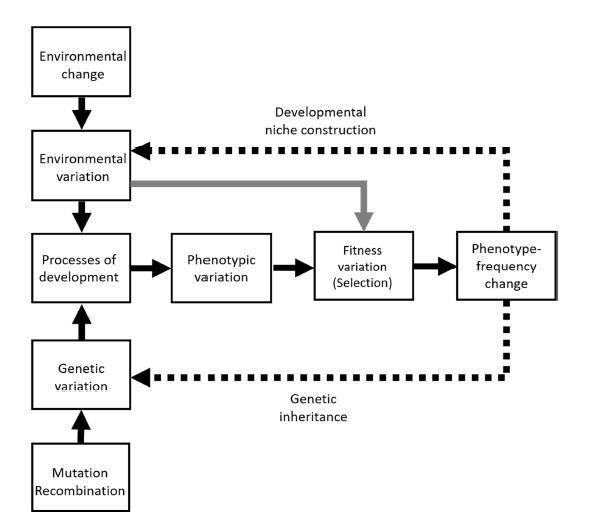
The autonomy of variation, differential fitness and inheritance is deeply entrenched in contemporary evolutionary biology. But it is a convenient heuristic and not a logical necessity, and it may or may not accurately capture biological reality. Many biologists suspect that it does not and that, in the real world, causes of variation, fitness, and heredity are intertwined. Tobias and Heikki show that such alternative instantiations of the principles of evolution by natural selection can affect the structure of evolutionary theory. And this, in turn, can make it perfectly valid to consider both natural selection and niche construction part of an evolutionary explanation for why organisms are well suited to their environments.
Failing to appreciate how different instantiations of Lewontin’s principles affect causal explanation in evolution is a major source of communication failure surrounding not only niche construction, but also developmental plasticity, extra-genetic inheritance and other phenomena.
Tobias and Heikki also suggests another reason people do not seem to understand each other: the views held by scientists on how science works. Many scientists expect their deep-held views, such as the core of the genetic instantiation of evolution by natural selection, to be falsified by data before they consider alternatives. Other scientists put less emphasis on anomalies and evaluate conceptual frameworks primarily on their ability to stimulate useful research. These different perspectives on scientific progress cut across disciplines but are rarely made explicit in scientific debates.
Nevertheless, philosophy of science is important to understand what the contention actually is about. If one considers niche construction theory an attempt to formulate an alternative research programme, it should be evaluated on the basis of its ability to stimulate new questions and predict patterns and phenomena that would otherwise appear surprising; not on the basis of whether or not it falsifies the genetic perspective. On the other hand, those arguing for more substantial conceptual change must strive towards showing that their framework leads to a different, theoretically and empirically progressive, research programme. Maybe the need for scientific pluralism is a good topic to bring up at your next coffee break?
Cause and Process at the KLI
Evolutionary biologists and philosophers of biology recently gathered at the KLI, an international centre for advanced studies in theoretical biology, to discuss the nature of causation in evolutionary biology. The workshop, organised by Tobias and Kevin Laland, aimed to clarify how the ongoing integration of development and evolution may influence the structure of evolutionary theory and the nature of evolutionary explanations.
The classic view on causation in evolutionary biology makes a clear distinction between proximate and ultimate causes. The former explains how biological organisms work, very much like the causal-mechanistic explanations we see in engineering or chemistry. Ultimate causes, on the other hand, are historical; they explain why organisms work in particular ways. Natural selection is an ultimate cause and, to many biologists, it is the only cause needed to explain the adaptive fit between organism and environment.
The proximate-ultimate distinction seems to follow, almost logically, from (what we may call) the genetic representation of evolution by natural selection. But biologists these days regularly invoke proximate causes in their evolutionary explanations – think ‘plasticity-first’ scenarios, extra-genetic inheritance, and niche construction, for example.
One view is that this is a categorical mistake; a confusion arising from an inability to understand the distinction between proximate and ultimate causes. Another view is that, as useful as the proximate-ultimate distinction may be, it is a consequence of the genetic representation of evolution by natural selection and not a fundamental fact about biological causation. Other ways to think about the causal relations between the fundamentals of evolution – variation, differential reproduction, and heredity – may result in an evolutionary theory with a different structure.
Workshop participants scrutinized the problem in a variety of ways – from biologically motivated reasons why organisms are more responsible for their own evolution than we typically grant, to conceptually motivated scepticism towards population thinking and the causal status of natural selection itself.
The result was an exceptionally vibrant workshop, with very many insights on the relationship between development and evolution, individuals and populations, and cause and effect. Many participants commented that it was one of the most intellectually stimulating meetings they had ever attended. There was, of course, no universal agreement on how evolutionary causation should be understood. But we are definitely several steps closer to provide a 21st century account of the causes of evolution that is both biologically informed and conceptually coherent.
There will be a book published from the talks so that you can make up your own mind on the nature of causation in evolution – but for now, you may want to read these meeting reports by Massimo Pigliucci and Wim Hordijk.
If you are interested in this research program that supported this workshop, please visit our webpage and follow us on twitter.
Indiana Yang and the origin of the Tuscans!
This year marked the 6th in our quest for the evolutionary origin and introgressive spread of a sexually selected syndrome in wall lizards. It marked a return to central Italy to fill in the remaining gaps in the map tracing the origins of this phenotype. What has been revealed so far is an intricate history of isolation, evolution, and conquest through interbreeding.
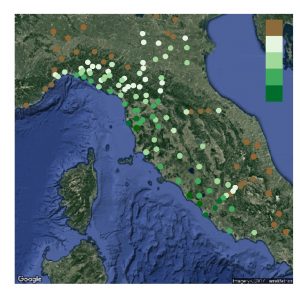
Phenotypes of the sampled populations in Italy vary from “Tuscan” (green) to ancestral (brown)
Here is the background to the Italian drama. The ancestral phenotype of the wall lizards is characterised by brown coloration and relatively small body size. This phenotype persists across the wall lizard’s current distribution, from western Spain throughout most of southern Europe and into the eastern Greek islands. However, in the not-so-distant past a population of wall lizards somewhere on the west coast of Italy evolved a suite of highly exaggerated characters – larger heads, bulkier bodies, green-and-black colour, aggressive behaviour, to name just some features. The green-and-black lizards – we call them Tuscans, but they are formally described as P. muralis nigriventris – later came into contact with their closest relatives, and then with a much older lineage evolving in western Europe. Both of these retain the usual brown wall lizard phenotype. Since then the whole suite of characters has spread via introgressive hybridization to cover most of the lowland areas from south of Rome to Genoa in the West, Bologna and Modena in the North, and the Appennines in the East.
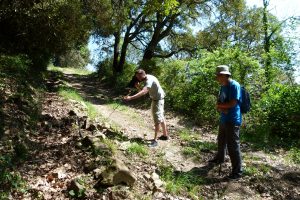
Catching lizards
The first aim of our research has been to reveal when and where this all happened. This detective work has so far taken in 100+ wall lizard populations in Italy. Like any good detective story, our suspect for the location of the origin of the Tuscan phenotype has been a moving target, constantly changing as more phenotypic and genetic sampling has ruled out potential hypotheses and given rise to others. This year saw the final pieces of the puzzle come together and, thanks to Yang’s and Hanna’s efforts in the lab, we expect to release a detailed evolutionary history in due time.
The second aim is to nail down who is guilty. We know one part of the answer: sexual selection. The exaggerated characters give males an advantage in competition with other males. Male-male competition thus promoted the evolution of the green-black phenotype during their time in geographic isolation. Sexual selection is also what has made the suite of characters introgress as the lizards came into contact with lizards of different genetic lineages. What remains to be understood are the ecological conditions that made sexual selection take off and persist to drive the characters to fixation.
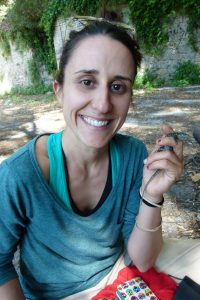
Happy PhD student
None of the introgressive spread would be possible, however, unless genomic and developmental organisation allowed the transfer of a whole suite of characters between lineages. Despite that the characters are quantitative, their spread is associated with limited overall genetic exchange. Thus, evolution of this suite of characters is shaped by, and probably shapes, genomic and developmental modularity. We suspect that an ancestral developmental organisation may contribute to the repeated evolution of similar phenotypes across wall lizard species. This is exciting because theoretical studies (Jones et al. 2014, Watson et al. 2014) suggest that evolution of development under correlational selection can make even random mutation produce phenotypes that are non-random with respect to fitness. One of our main long-term goals is therefore to use the wall lizards to study how the evolution of development shapes the capacity for continued evolution, or evolvability.
A second long-term goal is to understand what, if anything, will make the introgression stop? Our phenotypic sampling has revealed a potential kryptonite to the Tuscan phenotype – high altitude. The introgressive spread of the Tuscan phenotype is restricted in the mountains and in some cases cease altogether, resulting in the persistence of the brown backed morph at the highest altitudes. There are several potential explanations for this, including geographic barriers or selection. This year we added to new detectives to the team, Mara and Théo, whose projects are designed to address this question.
So the wall lizard story continues. As one chapter draws to a close new research questions have emerged allowing us to continue our spring forays to the land of pizza, pasta and lucertole. Now with the genome at our hands, the opportunities to explore these questions at both a phenotypic and genomic level have never been greater. Let us know if you’d like to join us.
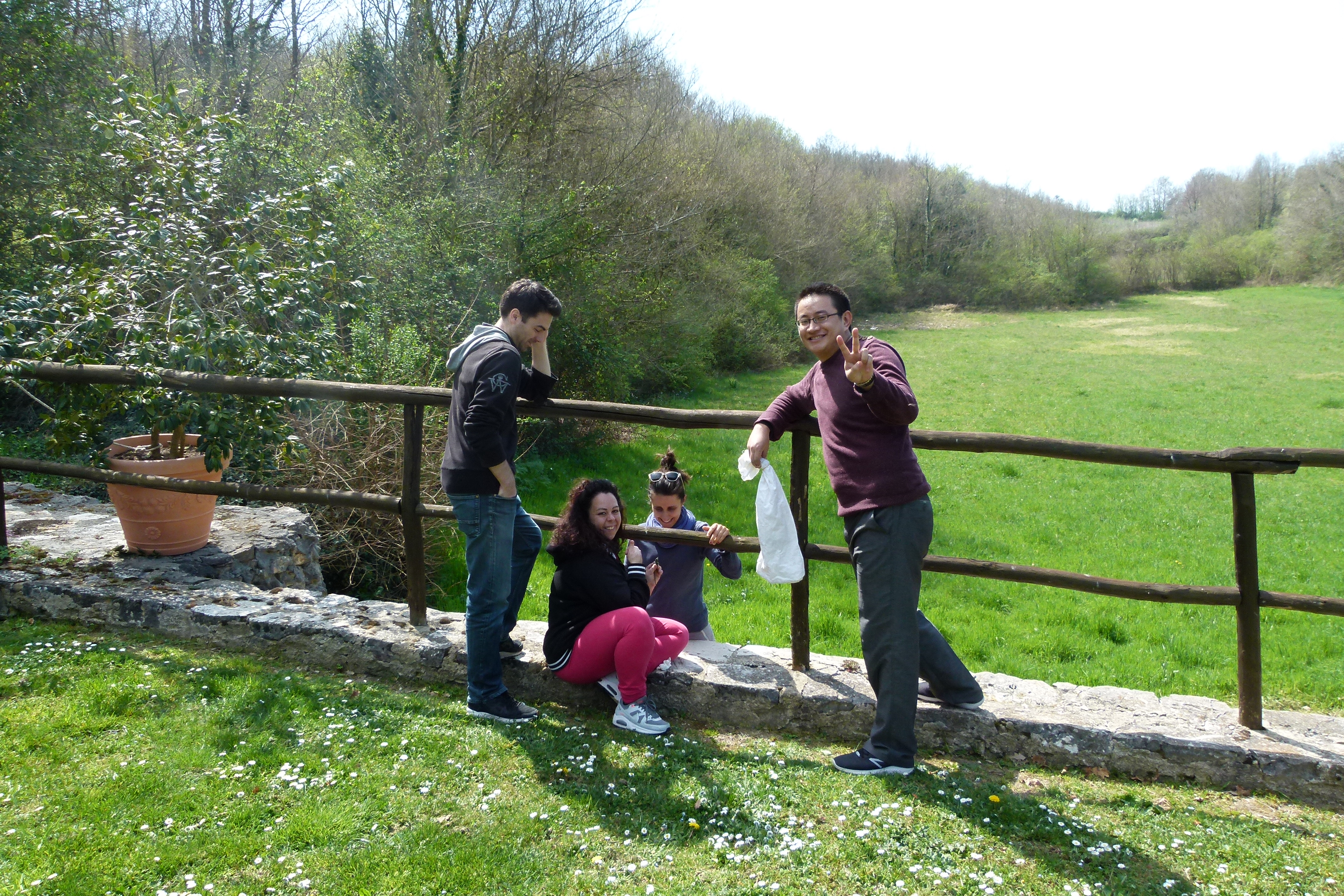
Hard fieldwork this April
For the published work to date, please see the following papers
While, G.M., Michaelides, S., Heathcote, R.J.P., MacGregor, H.E.A., Zajac, N., Beninde, J., Carazo, P., Pérez i de Lanuza, G., Sacchi, R., Zuffi, M.A.L., Horváthová, T., Fresnillo, B., Schulte, U., Veith, M., Hochkirch A. & Uller, T. 2015. Sexual selection drives asymmetric introgression in wall lizards. Ecology Letters 18:1366-1375
Heathcote, R., MacGregor, H., Sciberras, J., While, G.M., D’Ettorre, P. & Uller, T. 2016. Male behaviour drives assortative reproduction during the initial stage of secondary contact in lizards. Journal of Evolutionary Biology 29:1003-1015
MacGregor, H.E.A., While, G.M., Barrett, J., Perez I de Lanuza, G., Carazo, P., Michaelides, S. & Uller, T. Experimental contact zones reveal causes and targets of sexual selection in hybridizing lizards. Functional Ecology 31:742–752
MacGregor, H.A.M., While, G.M. & Uller, T. Comparison of reproductive investment in native and non-native populations of common wall lizards reveals sex differences in adaptive potential. Oikos, in press
While, G.M. & Uller, T. Female reproductive investment in response to male phenotype in wall lizards and its implications for introgression. Biological Journal of the Linnean Society, in press
What’s new in lizard social evolution?
A series of recent papers show how good places to live shapes family life in Egernia lizards. Our research – headed by Geoff and his students Ben and Tom – have revealed that the distribution of crevice sites influence group size, polygyny, and the opportunity for sexual selection. This affects the offspring too, 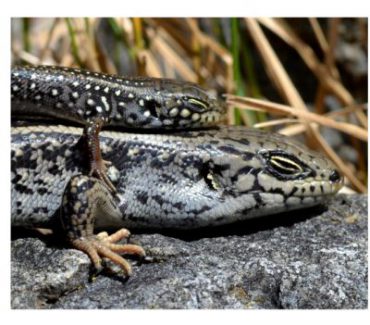 because the distribution of adults determine the costs and benefits of dispersal. What about males? They do not like when females mate outside of the pair bond. This can disrupt family living since it is the aggression between fathers and offspring, and between siblings, that make the youngsters pack their bags and move. You can read the details here, here, and here.
because the distribution of adults determine the costs and benefits of dispersal. What about males? They do not like when females mate outside of the pair bond. This can disrupt family living since it is the aggression between fathers and offspring, and between siblings, that make the youngsters pack their bags and move. You can read the details here, here, and here.
New group members!
We are very happy to welcome Mara Ruiz Miñano and Théo Ducos to the group. Mara is a new PhD student at the University of Tasmania, supervised by Geoff and Tobias. Mara will join our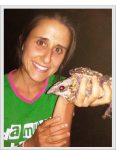
 research project on the causes and consequences of hybridization in wall lizards. This means she will split her time between Lund and Tasmania, with a fair bit in between catching lizards in Italy. Théo will also be working on wall lizards for his MSc project, which continues our collaboration with Patrizia D’Ettorre at the University of Paris 13. Looks like it could be a fun field season!
research project on the causes and consequences of hybridization in wall lizards. This means she will split her time between Lund and Tasmania, with a fair bit in between catching lizards in Italy. Théo will also be working on wall lizards for his MSc project, which continues our collaboration with Patrizia D’Ettorre at the University of Paris 13. Looks like it could be a fun field season!
This View of Life
 Tobias is interviewed by David Sloan Wilson on This View of Life. The piece can also be read on our EES blog, together with recent posts by Massimo Pigliucci, Kim Sterelny, Armin Moczek and others.
Tobias is interviewed by David Sloan Wilson on This View of Life. The piece can also be read on our EES blog, together with recent posts by Massimo Pigliucci, Kim Sterelny, Armin Moczek and others.
Alfredo Rago joins us as postdoc!
 As pointed out by Scott Gilbert, the environment is a “normal agent of development”. But how do organisms evolve to integrate features of the environment into their development? And how does that affect their ability to evolve further? These are some of the questions that Alfredo will address in his research, which is a close collaboration with computer scientist Richard Watson at the University of Southampton. We are very excited to have Alfredo here on what promises to be an outstanding project!
As pointed out by Scott Gilbert, the environment is a “normal agent of development”. But how do organisms evolve to integrate features of the environment into their development? And how does that affect their ability to evolve further? These are some of the questions that Alfredo will address in his research, which is a close collaboration with computer scientist Richard Watson at the University of Southampton. We are very excited to have Alfredo here on what promises to be an outstanding project!
Alfredo brings strong opinions about coffee and much more to the group. Except for the coffee we think he’ll be fine. Just consider that he is from Rome, the epicentre of green-and-black wall lizards, and did his PhD at the University of Birmingham with John Colbourne, one of the founders of the Daphnia Genomics Consortium. Not to mention that he began his science career as an Msc student with Tobias at Oxford, unravelling what makes some frogs such good invaders. Welcome, Alfredo!
![]()
Are jumping genes driving the radiation of Anolis lizards?
A new study by Nathalie Feiner brings a fresh perspective on the famous adaptive radiation of Anolis lizards. The paper, published this week in the Proceedings of the Royal Society of London B, reveals that speciation events are accompanied by accumulation of DNA sequences that can copy and paste themselves within the genome. Such transposable elements (TEs), popularly referred to as jumping genes, have long been suspected to contribute to evolutionary diversification. Good evidence for this intriguing idea has been hard to come by, however.
There are two main hypothesis for how TEs can contribute to adaptive radiation. Firstly, TE activity may promote speciation by causing genomic incompatibility between incipient species. Secondly, TEs may facilitate adaptation by rewiring gene regulatory networks such that new variants become available for selection.
To test these hypotheses, Nathalie compared the DNA sequences of Hox gene clusters of thirty lizard species. The results revealed that there was a burst of TE activity in the lineage leading to extant Anolis. It did not stop there – TEs have continued to accumulate during speciation events, leading to the pattern that Anolis lizards whose evolutionary history is characterized by many speciation events also accumulated many TEs. This finding nicely supports the hypothesis that TE proliferation may contribute to reproductive isolation.
Could TE activity also have caused the morphological differences that characterize Anolis ecotypes? Well, there is no evidence for this as yet, but this hypothesis is much more difficult to test since we need to learn more about developmental genetics to know where to look. Nevertheless, Nathalie’s study is an exciting first step towards unravelling the genomics of adaptive radiation of these wonderful lizards!
![]()
Loci of Evolution workshop in Paris
Last month Antonio participated in the Loci of Evolution meta-analysis workshop. The aim of the workshop was to brainstorm ideas for the use and improvement of Gephebase (www.gephebase.org) – a 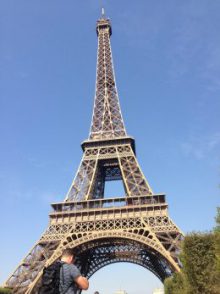 database created by Arnaud Martin (George Washington University) and Virginie Orgogozo (Institut Jacques Monod). Gephebase is a compilation of published studies that have illuminated genotype-to-phenotype relationships in diverse organisms in laboratory and natural settings. The workshop brought evolutionary geneticists from Europe and North America together to discuss technical details about the database as well as ideas for meta-analyses. Antonio’s proposed contribution to this ambitious initiative is to explore patterns of gene network properties underlying genotype-phenotype relationships listed in the database.
database created by Arnaud Martin (George Washington University) and Virginie Orgogozo (Institut Jacques Monod). Gephebase is a compilation of published studies that have illuminated genotype-to-phenotype relationships in diverse organisms in laboratory and natural settings. The workshop brought evolutionary geneticists from Europe and North America together to discuss technical details about the database as well as ideas for meta-analyses. Antonio’s proposed contribution to this ambitious initiative is to explore patterns of gene network properties underlying genotype-phenotype relationships listed in the database.
![]()

